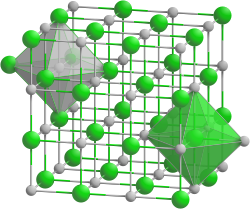 | |
| Names | |
|---|---|
| Other names Terbium monophosphide, phosphanylidyneterbium | |
| Identifiers | |
3D model (JSmol) | |
| EC Number |
|
PubChem CID | |
| |
| |
| Properties | |
| PTb | |
| Molar mass | 189.899 |
| Appearance | Black crystals |
| Density | 6.82 g/cm3 |
| Structure | |
| Cubic | |
| Related compounds | |
Other anions | Terbium nitride Terbium arsenide Terbium antimonide Terbium bismuthide |
Other cations | Gadolinium phosphide Dysprosium phosphide |
Except where otherwise noted, data are given for materials in their standard state (at 25 °C [77 °F], 100 kPa). | |
Terbium phosphide is an inorganic compound of terbium and phosphorus with the chemical formula TbP. [1] [2]